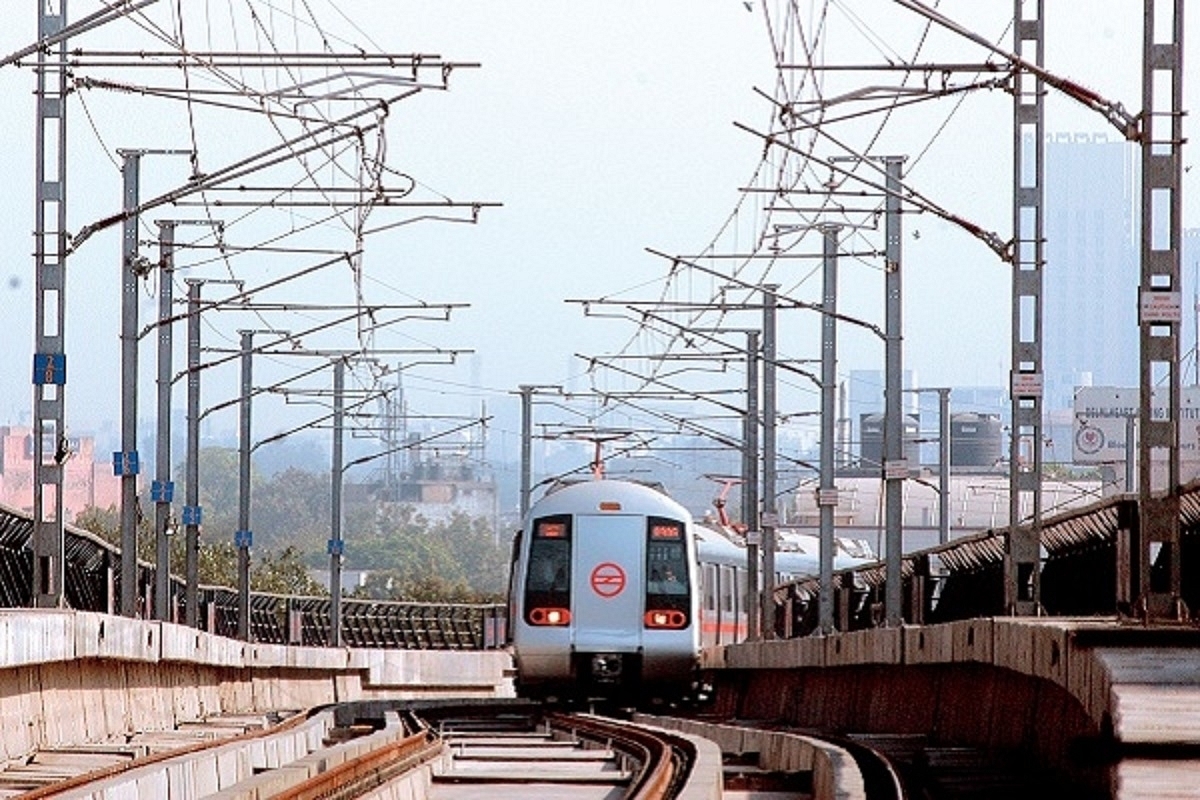News Brief
Delhi Metro To Use Hi-Tech Digital Mechanisms To Monitor Old Structures During Phase 4 Tunnelling Work

Delhi Metro. (Getty Images)
The Delhi Metro Rail Corporation (DMRC) is all set to introduce a state-of-the-art real-time web-based monitoring mechanism to monitor the condition of buildings while carrying out tunnelling work between Derawal Nagar and Pulbangash on the Janakpuri West-RK Ashram Marg corridor of Phase 4.
The stretch between Derawal Nagar and Pulbangash will comprise three underground metro stations — Derawal Nagar, Ghanta Ghar, and Pulbangash. These areas are extremely congested and there are innumerable buildings which are centuries old and some are not in very good condition.
Therefore, DMRC will have to monitor the condition of these structures continuously once the tunnelling work commences next month. DMRC has in the past carried out construction in similarly difficult areas with great success in old Delhi for the violet and yellow lines.
During those construction phases also round the clock monitoring was done.
However, according to DMRC, this time, the monitoring system has been digitised with the provision of real-time monitoring just with the click of a button.
This would be made possible by installing smart gadgets such as automatic total stations, vibration sensors, tilt meters, load cells etc, capable of capturing and transmitting 24x7 real-time data to DAS (data acquisition system) which keeps on processing the same and transmitting the desired report to all stakeholders through SMS and email.
As the tunnelling work commences, the behaviour of the structures above shall be monitored in real-time to take timely measures (as required) as the data shall be available on a custom-made software accessible through mobile/desktop for round-the-clock monitoring.
This real-time monitoring exercise will be done from eight different locations on this stretch where elaborate instrumentation is being done with the equipment mentioned above which will pass on the real-time data to the software.
These eight locations are spread across the areas of Derawal Nagar, Ghanta Ghar, Nabi Karim, Pulbangash, and Sadar Bazar. This web-based mechanism is a major step forward towards ensuring safe construction of the tunnelling work on this stretch.
Further, DMRC’s other initiative this time is equipping all its tunnel boring machines (TBM) with BEAM (bore tunnelling electrical ahead monitoring) system.
It enables the TBM to work as a real-time probe for predicting the geological strata up to 20m ahead of the machine’s cutter head face and predict any unexpected encounter with filled wells, cavities, and aquifers that may lead to settlement over the ground if hit by the TBM without proper treatment.
In the last few years, DMRC has focused a great deal on digitising its project monitoring mechanisms. Through the indigenously developed STAMP (system for tracking and monitoring project) software, DMRC engineers monitor the progress of construction.
During the Covid-19 pandemic, when physical presence in offices was restricted, the building information modelling (BIM) software was widely used for approval of the various designs for the Phase 4 structures. It is still being used extensively by DMRC’s engineers.
DMRC is constructing about 28 kilometres of new underground corridors as part of its Phase 4 expansion, under which 65 km of new lines are being laid across three different corridors.
This will be a major engineering challenge since the underground corridors are going to pass through a variety of strata such as crowded residential as well as commercial areas in Sadar Bazar, Nabi Karim and the southern ridge on the Mehrauli Badarpur road.
So far, DMRC has completed 2.2 km of underground tunnels (for up and down movement) between Janakpuri West and Krishna Park Extension on the Janakpuri West-RK Ashram Marg corridor.
Support Swarajya's 50 Ground Reports Project & Sponsor A Story
Every general election Swarajya does a 50 ground reports project.
Aimed only at serious readers and those who appreciate the nuances of political undercurrents, the project provides a sense of India's electoral landscape. As you know, these reports are produced after considerable investment of travel, time and effort on the ground.
This time too we've kicked off the project in style and have covered over 30 constituencies already. If you're someone who appreciates such work and have enjoyed our coverage please consider sponsoring a ground report for just Rs 2999 to Rs 19,999 - it goes a long way in helping us produce more quality reportage.
You can also back this project by becoming a subscriber for as little as Rs 999 - so do click on this links and choose a plan that suits you and back us.
Click below to contribute.
Latest